IABSC Summit Sets Record for Attendance And Showcases the Emerging Future of Air Travel
IABSC Summit Sets Record for Attendance And Showcases the Emerging Future of Air Travel
More than 300 industry experts, including representatives from airlines, airports, regulatory authorities, and suppliers from the US and Europe, gathered in Dallas on Jan. 23-24 for the International Association of Baggage System Companies (IABSC) Summit. It was the largest turnout ever for the annual event, with attendance up more than 50 percent over last year.

Annual Summit Committee (left to right): Jay Bouton – Siemens Logistics, Bridgette Davidson – Meltric, Beau Stombaugh – Beumer Corporation, Chris Norton – VTC, Matt Williams – Robson Handling Technology
Day One
Dubbed “Destination Clear Skies,” the Summit explored topics far beyond the organization’s regular focus on airport baggage handling system technology to offer a wide-ranging view of the future of air travel. From the effects of technology, energy, and regulatory policy to a changing passenger demographic, the sessions foretold a new era of air travel and the infrastructure that supports it.
There was an across-the-board focus on the passenger experience—a phrase heard often in every session—noting how terminal design, security, and technology are expected to introduce dramatic changes to air travel. It also offered a glimpse at the harsh reality of the current economic environment and what may be in store before the end of the decade.
Two baggage systems engineers with a lifetime in the baggage handling industry were recognized for their contributions to automated baggage system design.

Bob Pollard accepts on behalf of Joel Staehs.
The late Joel Staehs was awarded the Industry Innovation Award for his patent on the BAE Pusher and SuperPusher design that served as the standard baggage diverter for nearly two decades and revolutionized automatic baggage sorting in airports around the world. Over 3,000 BAE pushers were incorporated into baggage handling sort systems in the U.S., Canada, Australia, and the UK until they were replaced by the Siemens Diverter in the early 2000s.
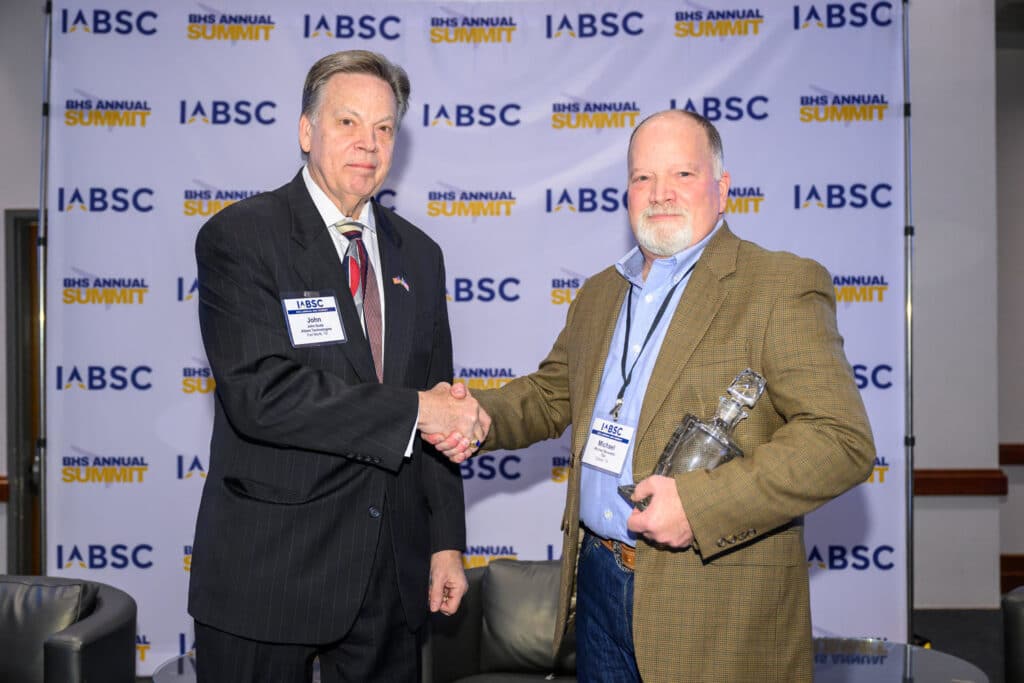
The IABSC Lifetime Achievement award went to Michael Benedetti for more than 30 years of innovation in automation, controls and software in automated baggage sorting and security. Benedetti is best known for his influence on TSA Baggage security policy, where he applied his real-world experience in BHS to the Planning Guidelines and Design Specifications (PGDS) and was instrumental in the development and management of the TSA System Integration Facility (TSIF) test loop in Washington DC. He also authored TSA’s Interface Requirements Document (IRD), which continues to be TSA’s standard for explosive detection System (EDS) integration, and the CBIS Control Change Request (CCR) and Request for Variance (RFV) processes to ensure changes and variances were properly implemented and documented in security screening systems in the US, and the Data Acquisition Controller (DAC-1) which independently collects baggage data to determine system rate, sizes, and inefficiencies.
The Summit keynote speaker, Lauren Saidel-Baker, an economist with ITR Economics, provided an economic context for the sessions that would follow over the course of the two-day event. She gave attendees a glimpse at the economic landscape in 2023 and 2024 as viewed by ITR and suggestions on how to best prepare for the challenges and uncertainties ahead. It included potential business strategies and tactics to address changes in the economy and in key markets. It was hopeful yet concerning, with slow economic growth in 2023 and a likely recession in 2024.

According to Saidel-Baker, twelve leading indicators tracked by ITR Economics foretell a US economic decline in 2024. The slowing economic growth will reduce pressure on the supply chain. Still, the war in Ukraine and economic sanctions levied by the west are causing havoc in commodity pricing for crude oil and copper, with expected declines in the price of up to 10 percent over the next two years, including a 30 percent drop in the price of steel by the end of 2024. Over the longer term, ITR is forecasting a worldwide depression in 2030.
In the meantime, there is $550 billion in new spending slated for domestic transportation and utilities over the next five years as part of the recent Federal infrastructure bill, including $25 billion for airports, $110 billion for roads and bridges, $39 billion for public transit and $17 billion for ports. The price tag for new utilities spending over the same period is $264 billion.
Saidel-Baker had much to say about the current and near-term labor shortages in the US, with low unemployment expected to continue, along with persistent labor shortages in construction, manufacturing, wholesale trade, and transportation.
These numbers suggest a trend in rising wages as organizations compete for employees. Saidel-Baker said it is currently an employee market, with nearly two jobs available for every employee seeking work. This does not include those who are no longer in the job market. All of these indicators impact the aviation and air travel industries.
At the same time, loan, credit card, and residential delinquencies are at record lows, while domestic non-financial profits are at a record high.
Even though ITR is forecasting a depression in 2030, they recommend that organizations capitalize on the growth expected to occur until the end of the decade, and “although depressions are painful, they also represent substantial wealth-generating events,” she said.
The keynote address set the economic stage for Summit and was followed by presentations on how airlines and airports are addressing current economic conditions and preparing for the future. It featured speakers from two airports and two of the largest US airlines and was moderated by Paul Bowers, publisher of Airport Improvement Magazine.
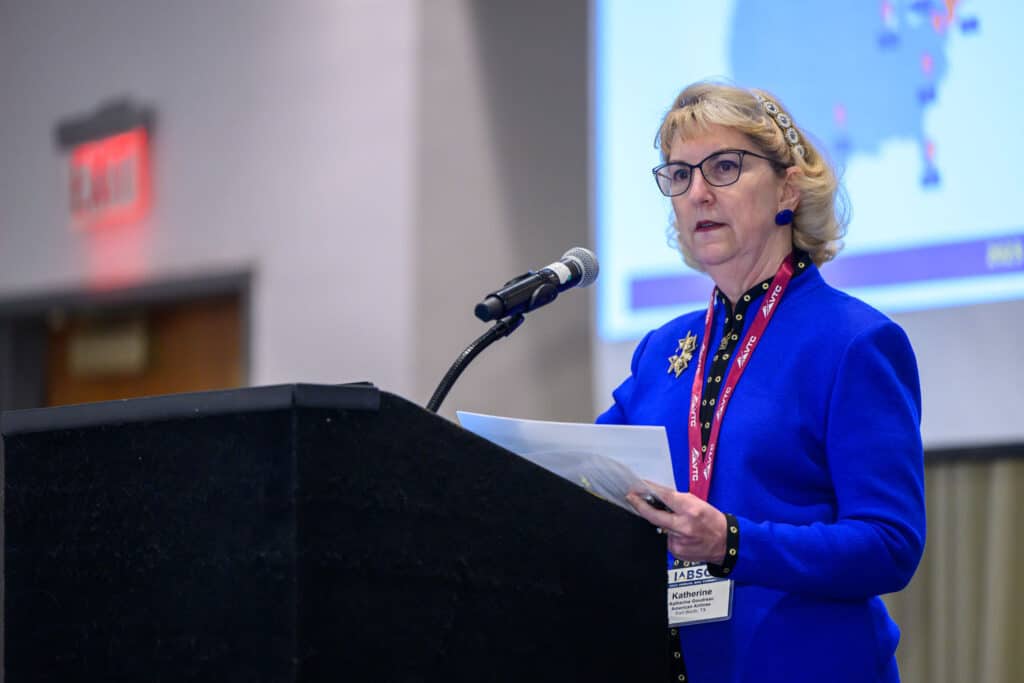
In a wide-ranging discussion on the current health of air travel and the impact of COVID during the pandemic and afterward, Katherine Goudreau, Managing Director of Real Estate with American Airlines, and Steven Tamaroglio, Director of Airport Operations with United Airlines, graphically demonstrated how destructive COVID lockdowns were to passenger traffic, surpassing the declines that resulted in the aftermath of 9/11.
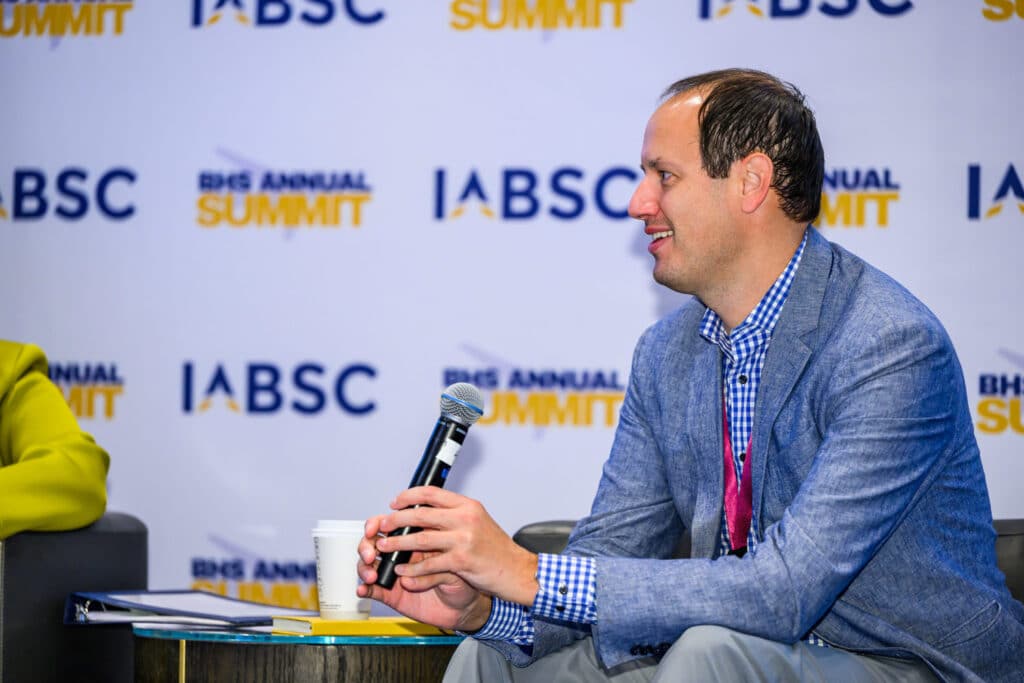
However, recovery post-COVID has been much quicker than after 9/11 and the global financial crisis in 2009, with passenger enplanements and operating revenues showing steep increases. Although there has been a strong rebound in the last year, air travel is still dealing with the residue of the pandemic. Airlines across the board continue to face regional pilot shortages, aircraft delivery delays, increasing fuel costs, and a competitive labor market, all of which present constraints on carrier growth.
One unexpected result of the pandemic has been a change in the composition of the passenger mix, with domestic leisure passengers outpacing domestic business travelers; 85 percent of current passengers are classified as infrequent flyers but provide more than 55 percent of airline revenue.
These changes in the air are being met with similar changes on the ground. Speakers from two airports addressed how the realities of air travel in the post-COVID world are being met on the ground.

Lisa Corcoran, Planning and Engineering Director at Spokane International Airport (GEG), and Casey Ries, Engineering and Planning Director at Grand Rapids Gerald R. Ford International Airport (GRR), presented capital plans focused on the passenger experience, including streamlined passenger flow, improved wayfinding: more automation and self-service kiosks to assist travelers, improved baggage handling systems and terminal enhancements.
Lisa Corcoran, Planning and Engineering Director at Spokane International Airport (GEG), and Casey Ries, Engineering and Planning Director at Grand Rapids Gerald R. Ford International Airport (GRR), presented capital plans focused on the passenger experience, including streamlined passenger flow, improved wayfinding: more automation and self-service kiosks to assist travelers, improved baggage handling systems and terminal enhancements.

GEG Terminal Expansion

GRR Growth Forecast
Ries said GRR’s capital expansion program is “the largest capital expansion in the US for a small-hub airport,” noting that the Terminal Enhancement program alone has a budget of $157 million, including $137 million allocated to baggage handling system improvements that affect both inbound and outbound systems. GRR has outpaced its high growth forecast by an average of 9 percent per year, and that trend shows no signs of slowing.
Afternoon sessions extended the futuristic perspective with presentations on critical infrastructure challenges moderated by Rick Weaver, Regional Manager of Airport Screening Operations at Southwest Airlines. It featured a panel discussion with Stewart Steeves, COO of Vantage Airport Group, David Mason, Principal Regional Leader of Aviation and Transportation at HOK Aviation, and Allan Callo, CEO at Syscontek Consulting, with a focus on planning for flexibility and “future-proofing,” operating costs, sustainability and resiliency in facilities and operations. All reinforced that passenger experience, terminal flexibility that reflects the changing demographic of the traveler, capital costs, and constructability are central to proper planning.

The final session closed out day one with a discussion on infrastructure funding and regulation, featuring Shannetta Griffin, P.E., the Associate Administrator for Airports with the Federal Aviation Authority (FAA), and T.J. Schulz, President of the Airport Consultants Council (ACC). Termed a “Fireside Chat,” the session offered an overview of funding opportunities available from the FAA that will go a long way to enable the improvements discussed in earlier sessions.


Day Two
While the event’s first day centered on economic issues and industry outlook, day two was a stratospheric look at what is actually in development for the future of air travel. Moderated by Matt Williams, President of Robson Handling Technology, the day’s opening session was “A Look into the Future” with panelists Shannetta Griffin with the FAA, Paul Puopolo, Executive VP for Innovation at DFW Airport, and Steven Tamaroglio with United Airlines.
Griffin announced an entire slate of funding initiatives underway at the FAA, including preparation for uncrewed aerial systems (UAS), advanced air mobility (AAM) aircraft, commercial spacecraft, and green fuel technologies. In addition, she unveiled the Sustainable Aviation Fuel (SAF) Grand Challenge, a plan to scale up new technologies to produce sustainable aviation fuels on a commercial scale. The program will also help airports meet their emission reduction goals. The program expects to produce three billion gallons of SAF by 2030 and meet 100 percent of aviation fuel demand by 2050. That would require a ten-fold increase over the 2030 goal. She also introduced the EAGLE Initiative, designed to eliminate aviation gasoline lead emissions.

Steven Tamaroglio fired up the audience with his presentation on United’s partnership with Boom Supersonic, signaling the rebirth of commercial supersonic flight. With an appearance that harkens back to the sleek lines of the Concorde that flew its last flight two decades ago, the Boom aircraft is designed to carry 65 to 88 passengers at speeds twice as fast as today’s passenger jets. That would mean a four-hour flight time from Newark to Frankfurt or eight hours from LAX to SYD. The timeline for the Boom launch is for the first flight in 2026 and passenger travel in 2029. Tamaroglio said United is the first US carrier to partner with Boom Supersonic.

He said Archer Aviation and Eve Air Mobility are developing short-range eVTOLs that have the potential to revolutionize the commuter experience, and Heart Aerospace is developing a hybrid-electric aircraft with a range of up to 250 miles.
United is also the first airline to commit to funding a biofuel refinery expected to produce up to 50,000 barrels a day of SAF. With all this futuristic development in the pipeline, United is not abandoning its core business. The carrier plans to add 500 new narrow-body aircraft to the fleet over the next five years and ramp up its investment in BHS, facilities, gates, lobbies, and hangars to support the projected growth.

Puopolo unveiled a slate of futuristic programs underway at DFW, from passenger and cargo movement automation to automated parking and curb management programs, not to mention the autonomous lawnmowers used to groom the Texas-size grounds at the sprawling airport.
In what Puopolo terms the “Frictionless Passenger Journey” throughout DFW, he showcased the planned use of biometrics, self-service baggage drops, a digital concierge, and digital ID platforms as improvements to the passenger experience. DFW has also added drone detection capabilities and improved perimeter security for the miles of fencing enclosing the airport grounds. His goal, he says, “is a sustainable airport ecosystem that leverages technology for a resilient, future-proof airport.”

The final morning session featured Mark Baker, Senior Manager-ASO at Southwest Airlines, Dave LaPorte, senior VP for airport operations at DEN airport, Harper Bateman, Associate Principal at Corgan, and Craig Mosford, Checked Baggage Capability Manager at TSA. The moderator was Jim Houghton, Aviation Business Development Manager for Materna Intelligent Passenger Solutions. This panel offered a wide-ranging discussion on automation, demographic trends, workforce challenges, and emerging technologies.

The afternoon session, titled “Leveraging Technology and Innovation,” featured panelists Dave La Porte, Jon Boede, Senior Research and Modeling Analyst at VTC, and Marlon van der Meer, founder of BagslD International, discussing the application of emerging digital technologies, including Building Information Modeling (BIM), computer vision, artificial Intelligence and analytics and their application in all operations in the air travel stream.
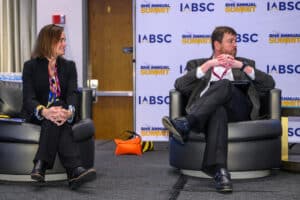

The conference closed with a presentation by TSA, moderated by Joe Emery, Project Manager at Studdiford Technical Solutions. It included TSA specialists Craig Mosford and Michael Benedetti, and Bert Willemsen with aXite Security Tools, discussing in detail the TSA checked baggage program and how it functions today.



The two-day exposition was heralded by many attendees as the most successful IABSC Summit to date, including the most trade exhibitors ever in the exhibit hall.


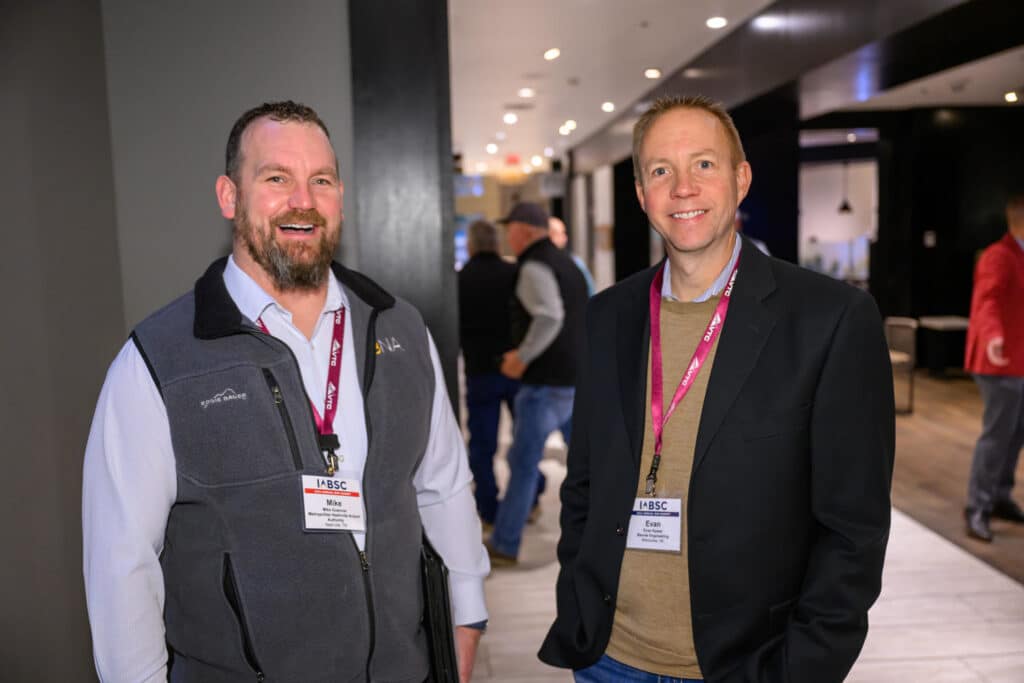
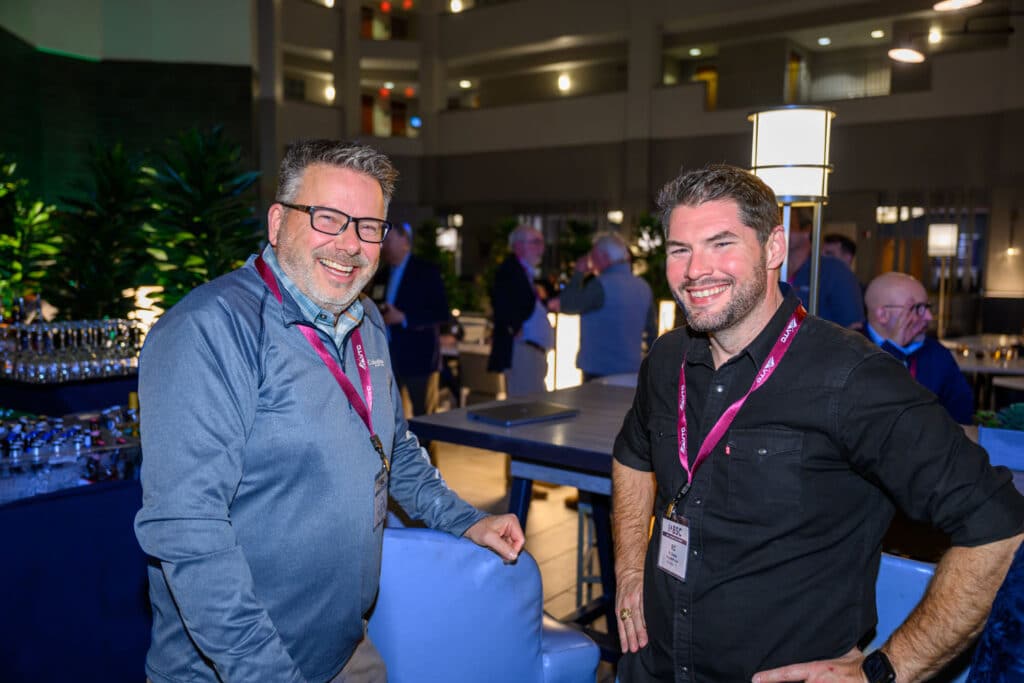
Joe Perry Photography





